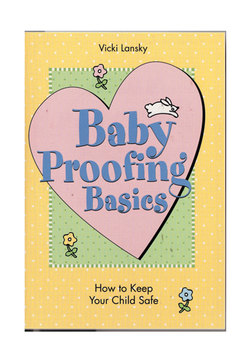Читать книгу Baby Proofing Basics - Vicki Lansky - Страница 19
На сайте Литреса книга снята с продажи.
BABY BASSINETS, CRIBS, BEDS AND BUMPERS
ОглавлениеBe sure your bassinet or cradle has a wide base and is sturdy and stable. Don’t use a basket not specifically designed as a bassinet. Loose wicker can poke and hurt a baby and the basket may not be stable enough.
If you buy or borrow a secondhand crib or use an old family one, it may not meet today’s safety standards without modification. The allowable distance between the slats of a crib is 2-3/8 inches. If you can fit a soda can through them, the opening is too large.
Cribs that have movable drop down sides have been banned by federal regulators. Be especially careful if using a secondhand crib with dropsides as there may be missing pieces or broken hardware.
Look for a crib mattress that is non-allergenic, stain-resistant, nonabsorbent and anti-static. Be sure that either a crib or bassinet mattress is firm and fits snugly in the crib frame, for the baby’s safety and comfort. You should not be able to get more than one finger between the mattress and the crib sides.
A number of safety groups and pediatricians are recommending bumber-free cribs. If you chose to use bumpers, use pads with at least six ties to keep them in place so your baby can’t get his or her head between or around them. Be sure the ties are no longer than eight inches or they become a strangulation hazard. When your child can stand in the crib, it’s time to remove the bumpers and stuffed toys or anything else that can be climbed on. At the same time, adjust the mattress to its lowest setting. The distance from the top of the side rail to the top of the mattress should be at least 26 inches. Some of babies’ worst falls occur when they climb out of cribs.
THE NURSERY/BEDROOM
Avoid any type of soft bedding under or over a baby. Only cover a baby with a thin covering such as a crib blanket. A sleeper outfit is a good alternative to a blanket.
Don’t use a pillow for an infant. Suffocation can occur if a baby can’t raise or turn his or her head. (A pillow will give an older child practice in “centering” him or herself — helpful when it is time to move to a big bed.)
Use fitted sheets, a mattress pad and/or a waterproof pad which fit snugly. A baby for the first 12 months can get caught up in loose linens.
Check blankets to be sure there are no loops or threads to catch a baby’s toes or fingers, and places in comforters through which stuffing might escape.
Crib corner posts should not extend above the end panels. Such spaces can entrap children.
Avoid placing a crib next to a sash window that cannot be safely locked when open to limit it being lifted from the bottom more than four to eight inches. Be sure that cords for shades, blinds or lamps are not within reach.
Never use plastic dry-cleaning bags to protect a mattress. They can suffocate a child who gains access to them.
Use this rule of thumb: When your child is about 35 inches tall, it’s time for a big bed. If it’s not possible to move him or her just at that time, put a mattress or a big pillow on the floor beside the crib — just in case.
Use a guard rail on a full-size bed with a mattress and box spring until your child is used to sleeping in it. A big pillow on the floor beside the bed can break a possible fall, as well as an old bed or crib mattress.
